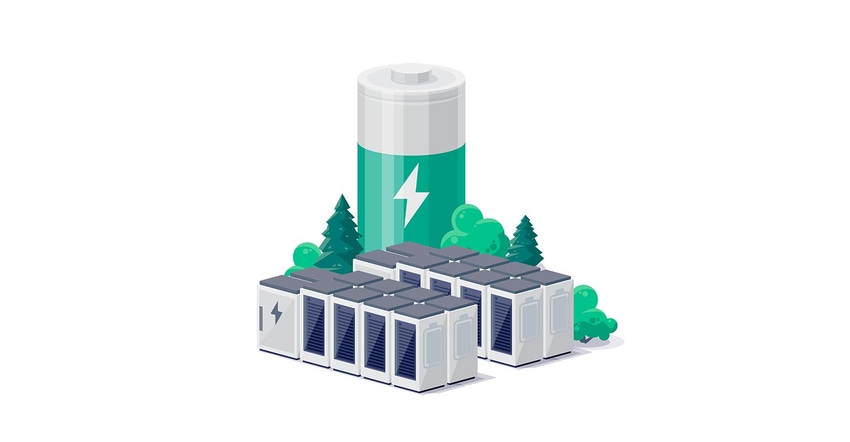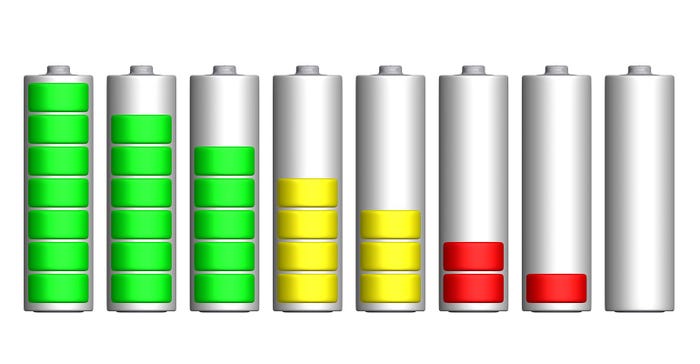What's the Difference Between Batteries & Supercapacitors?
Supercapacitors and batteries are two distinct energy storage solutions, differing in more than their energy storage mechanisms and temperature performance.

In today’s rapidly evolving technological landscape, the demand for energy storage solutions has grown exponentially. As renewable energy sources gain prominence and portable electronics proliferate, the need for efficient and versatile power storage technologies becomes increasingly evident. Supercapacitors and batteries are two prominent contenders in this field, each offering distinct advantages and applications. For example, MIT researchers have recently proposed a cheap, effective cement-based supercapacitor.)
Let’s delve into the main differences between supercapacitors and batteries, shedding light on their unique attributes and the roles they play in modern energy storage systems.
Energy storage mechanism
The fundamental difference between supercapacitors and batteries lies in their energy storage mechanisms. Batteries consist of electrodes, specifically an anode and a cathode, submerged in an electrolyte. Batteries store energy in a chemical form through electrochemical reactions between positive and negative electrodes and an electrolyte. The charging process is governed by Faraday’s laws of electrolysis, where ions flow between electrodes, converting chemical energy into electrical energy. During discharge, this process is reversed.
On the other hand, supercapacitors—also known as ultracapacitors or electric double-layer capacitors (EDLCs)—store energy electrostatically. When a voltage is applied to the capacitor across both electrodes, it creates a Helmholtz double-layer that segregates the adhered ions within the electrolyte, forming a mirror charge distribution of opposite polarity. This double layer resembles the dielectric layer found in a standard capacitor but possesses an incredibly thin thickness, equivalent to that of a single molecule. These processes occur much more quickly than the chemical reactions involved in battery charging.

Energy density and power density
Another primary distinction between supercapacitors and batteries is their energy density and power density. Energy density refers to the amount of energy stored per unit mass or volume, while power density indicates how quickly that energy can be delivered.
Batteries typically have higher energy density than supercapacitors, meaning they can store more energy per unit of weight or volume. This makes batteries better suited for applications requiring long-lasting power supply, such as electric vehicles and portable electronics.
Supercapacitors, on the other hand, excel in power density. They can deliver energy at a much higher rate than batteries, making them an ideal solution for applications that demand quick bursts of power, such as in pitch control systems for wind turbine blades. Supercapacitors are also often used in regenerative braking systems in vehicles, where they rapidly capture and release energy during braking, improving energy efficiency.
Cycle life and lifespan
Another critical factor distinguishing supercapacitors from batteries is their cycle life and overall lifespan. Cycle life refers to the number of charge and discharge cycles a device can undergo before its performance degrades significantly.
Supercapacitors have a much higher cycle life than batteries, typically enduring hundreds of thousands to millions of cycles without substantial degradation. This makes them highly reliable for applications requiring frequent and rapid charge and discharge, as they can withstand intense cycling without significant loss of capacity. Batteries generally have lower cycle life than supercapacitors but can still provide substantial energy storage over a more extended period.
Charging and discharging times
As mentioned earlier, supercapacitors possess the ability to charge and discharge rapidly due to their electrostatic energy storage mechanism. They can reach full charge in a matter of seconds or minutes, making them ideal for applications requiring quick energy transfer. But a supercapacitor that is not charging may experience a decrease of approximately 30 percent in its stored energy within a month, whereas a Li-ion battery would typically lose around 10 percent of the charge during the same period.
On the other hand, batteries have slower charging and discharging times, often taking hours to fully charge. This slower process is primarily due to the chemical reactions involved in the energy storage process. However, repeated deep discharge and overcharging can decrease the overall lifespan of batteries.

Temperature performance
Temperature performance is critical for energy storage systems, especially in extreme environmental conditions. In general, the optimal performance of a supercapacitor or battery depends not only on the operating temperature but on the ambient temperature and charging temperature. Depending on the manufacturer and the application, a battery might have better temperature performance than a supercapacitor. A big difference between batteries and supercapacitors is that batteries generate heat during charge transfer. Therefore, batteries require more complex and more expensive battery temperature monitoring to avoid thermal runaway.
Supercapacitors and batteries are distinct energy storage solutions, each with its own set of advantages and limitations. Supercapacitors excel in high-power, rapid charge/discharge applications, offering a long cycle life and high power density. On the contrary, batteries provide higher energy density, making them more suitable for long-term energy storage and applications requiring a consistent power supply. Understanding the differences between these technologies is crucial for designing efficient and effective energy storage systems tailored to specific needs and applications in our increasingly electrified world.
About the Author(s)
You May Also Like





